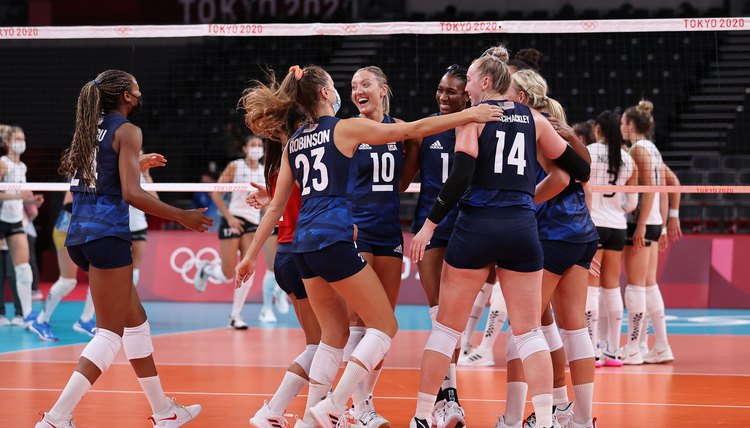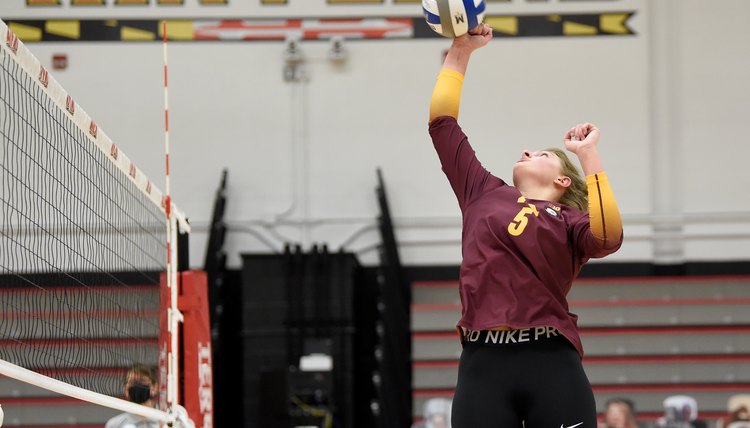How to Make Your Arms Not Hurt During Volleyball

Volleyball is an exciting sport and effective workout for people of all ages. Indoor volleyball and beach volleyball are among the most popular women’s middle school and high school sports in the United States.
This team sport does not require top athletic conditioning but does make use of several body muscle groups as volleying, hitting and spiking the ball involves jumping and lunging.
Volleyball also requires maneuvering and hitting the ball forcefully with the hands and forearms.

Mike Watson Images/moodboard/Getty Images
Common Volleyball Injuries
Overall, a lot of injuries in volleyball tend to be overuse injuries- meaning athletes don’t give themselves enough time to rest and recover in between playing in different tournaments or going to volleyball practice.
Soreness in the rotator cuff is an extremely common ailment, especially for hitters, who have to perform dozens of forceful arm swings throughout each match. Other severe shoulder injuries can be things like dislocations or tendonitis.

Mike Watson Images/moodboard/Getty Images
How to Make Your Arms Not Hurt
For beginners, it may feel like the arm pain and soreness is inevitable as you continue to play more; however, that is not the case. There are several ways to avoid this, and using correct body positioning techniques is one of them.
- Correct body positioning helps decrease sore arms, which in turn, will increase your overall volleyball game and allow you to play for a longer period of time without worrying about the ensuing pain and soreness. Here are some other tips on how to avoid arm pain in volleyball:
- Wear protective wrist padding or arm sleeves on both wrists, even if you only hit with your right arm/right hand. Wrist pads for volleyball are lightly padded elastic terry cloth bands that provide a buffer between the bony areas of your wrist and the volleyball.

Mike Watson Images/moodboard/Getty Images
- Spend time doing stretching exercises before playing volleyball. Your arms, shoulders, hamstrings, and quads are all utilized throughout a volleyball match, so having your full range of motion readily available is always a good idea.
- Bend your knees into a crouch before lunging upward to hit or spike the ball. Hold your arms low and behind you as you jump to get more height. Raise your arms to hit the ball as you reach the top of your jump. This helps to build up and propel your body upward and hit the ball with force from your entire body, not just your arm and hand strength.
- Hold your non-dominant hand in front of you and your dominant hand behind your head as you prepare to spike the volleyball with one hand. Swing your dominant hand straight out to hit the ball. Your non-dominant hand helps to balance your body. Holding your other hand behind you, give it more momentum as you reach out to hit the ball. After spiking or hitting the ball, bring your hand straight down. Letting your arm go across your body can injure your arm or shoulder.

Mike Watson Images/moodboard/Getty Images
Tips
Lunge your body forward as you hit the ball to help deliver more force to the ball, without hurting your arm. Make sure the volleyball you use is not too hard or overfilled with air. It should have some give when you hit it.
Warnings
It is important to learn the right techniques in any sport to avoid injuring yourself and play a better game. Wear shoes that provide adequate support to your ankles and knees to prevent injuries while jumping and lunging. If you are not used to playing on sand, practice before playing a competitive game.
References
Writer Bio
Noreen Kassem is a hospital doctor and a medical writer. Her articles have been featured in "Women's Health," "Nutrition News," "Check Up" and "Alive Magazine." Kassem also covers travel, books, fitness, nutrition, cooking and green living.
